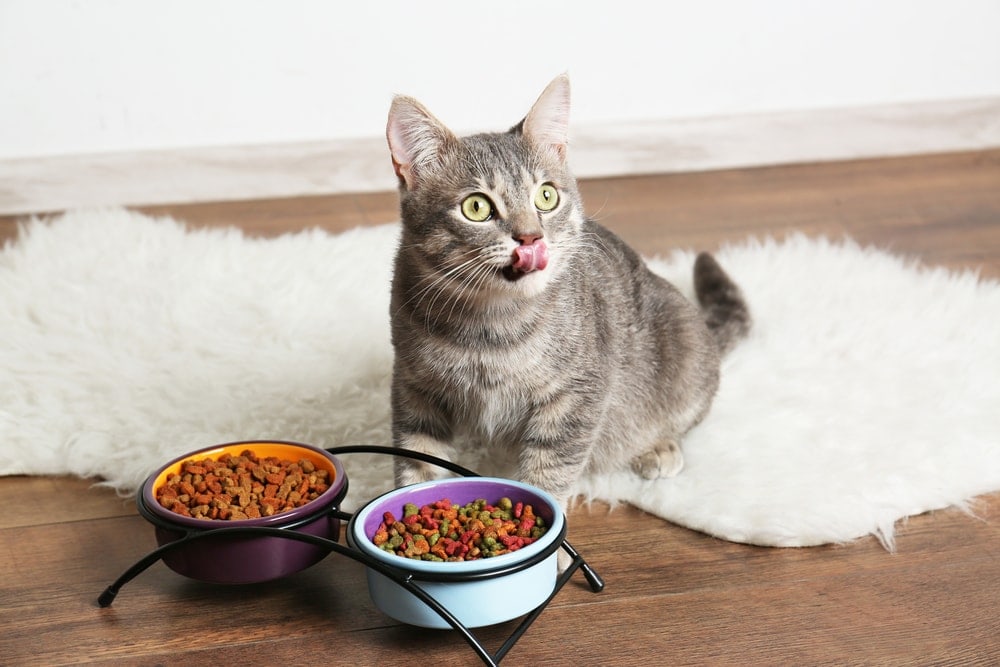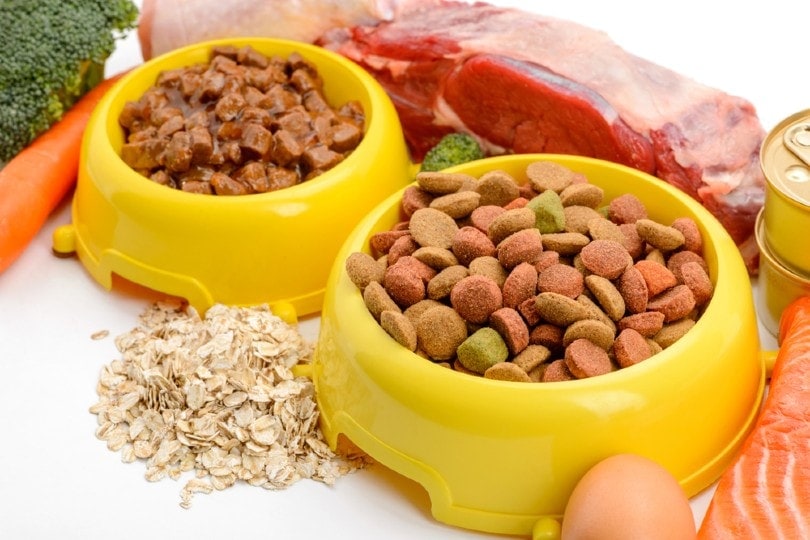
Cat Nutrition 101: What Does Your Cat Need to Eat?
Cats are obligate carnivores. That means their stomachs are made to break down animal proteins and only animal proteins. They are not designed to nurture from plants; for example their bodies lack the enzyme needed to break down carotene — the nutrient obtained from plant matter — into vitamin A. An obligate carnivore’s diet is made up of at least 70% meats and animal proteins. While some amount of plant matter won’t be harmful to your cat, they don’t get the same nutrition from plant matter that people do. You’ll want your cat’s food to be made up of mostly animal proteins so that your cat is getting proper nutrition from their food.

Protein Dominates the Menu
Animal proteins should be the first ingredient in any ingredient list for cat food. The first ingredient in the ingredient list is the primary ingredient, and the food is mainly compromised of this ingredient. Animal proteins are also a critical source of taurine and animal fat contains arachidonic acids, both essential nutrients that cats need to be healthy and live long lives. Animal proteins need to make up at least 70% of your cat’s food, just like in the wild. Ideally, a 75% or greater concentration of animal proteins is best. The more high-quality animal proteins are present in your cat’s food, the fewer low-quality filler ingredients can be present. Your cat’s food should also be less than 20% carbohydrates. Carbohydrates are a quick energy source for cats, but they don’t sustain them and make them feel full. A cat being fed too high a concentration of carbohydrates is at risk of overeating and becoming obese.
Dry Food or Wet Food?
Many pet parents feed their cats a mix of dry and wet food. Dry food is generally more cost-efficient than wet food but can leave cats dehydrated and contain low-quality filler ingredients. Carbohydrates are also an essential part of dry food formulas. It’s hard to create a pelleted kibble without any carbohydrates whatsoever. This doesn’t mean that you can’t have a cat if you can’t afford a complete diet of wet food, though. High-quality dry food can be just as species-appropriate as wet food and provide the same, sometimes better, nutrition than low-quality wet foods.

The Importance of Moisture Content
There are three types of cat foods that pet parents can choose from. They’re separated by moisture content and need to be stored differently, so make sure you know what kind of food you’re buying when you do. Dry food has between six and ten percent moisture content. Pet parents storing dry food will want to make sure they purchase an airtight bin for the food. The kibble pellets are usually coated with flavor-enhancing fats to make them more palatable to cats. If left in the open air, the fats in the kibble can go rancid before you even attempt to feed them to your cat. Semi-moist foods are about 35% moisture and are primarily made of meats and meat by-products. The food isn’t as susceptible to drying out as wet foods and can be used as a free-feeding choice for pet parents who use this feeding method. However, if left out long enough, the food will dry out and rancid. Canned food is 75% moisture and is generally the most expensive kind of cat food. Cats generally find canned food the most palatable cat food as it is most similar to fresh meats. Unopened canned food has the longest shelf-life, but any opened cans should be refrigerated to prolong their shelf-life.
How to Choose the Best Cat Food for Your Cat
The best indication of a cat food’s quality is the ingredient list. The Food and Drug Administration has approved any foods that carry an AAFCO-approved nutritional guarantee to be nutritionally balanced for cats.
- You’ll also want to look out for any low-quality filler ingredients like corn, rice, soy, brewers yeast, wheat, sugar, meat by-products, or meat and bone meal. While most foods will have some filler ingredients, they should be low on the list of ingredients.
- As we mentioned above, the first ingredient should always be a meat product. This is especially true of dry foods where the meat will have been dehydrated. If meat is still the primary ingredient by weight after dehydration, the food will be more species-appropriate for cats.
- If your cat is a picky eater and turns its nose up at most dry foods, a semi-moist or canned food might stimulate its appetite. You can use the wet food as a topper to put on top of some kibble and see if you can use the aroma and texture of the wet food to stimulate your cat’s appetite and get them eating their kibble.


0 Comments